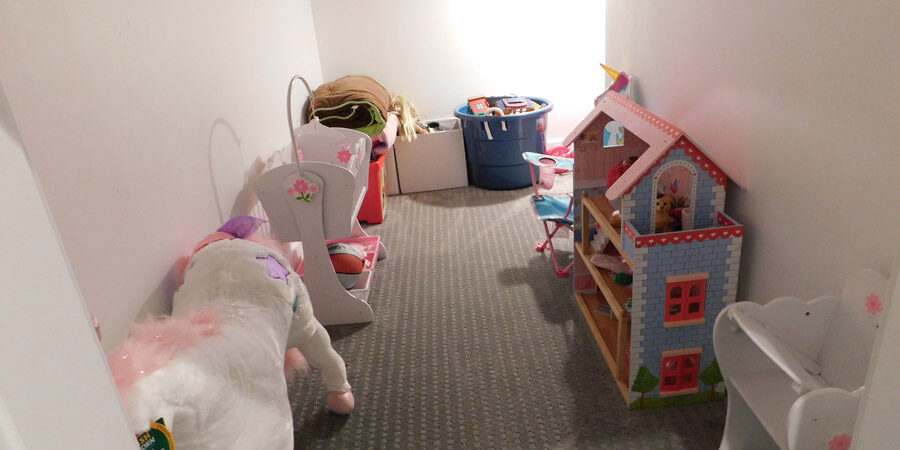Why the Basement Is the Perfect Family Playroom
Basements offer space and privacy, which means toys, noise, and imagination stay contained — without overtaking your living room. Plus, with good lighting, flooring, and insulation, a finished basement can become a bright, cozy part of the home year-round.
| Advantage | Family Benefit |
|---|---|
| Noise Containment | Let kids play, jump, and laugh without disturbing the rest of the house. |
| Ample Space | Room for larger toys, gaming setups, or indoor slides. |
| All-Season Use | Comfortable temperature all year, perfect for rainy or snowy days. |
| Added Value | Finished basements increase home appeal and usable square footage. |
1. The All-Ages Family Fun Zone
Create a playroom everyone can use. According to New York Stylist it is doable on a budget. Divide the basement into zones — one for kids, one for teens, and one for adults. Think soft play area meets lounge meets mini-game room.
- Soft flooring: Interlocking foam tiles or rubber for safety.
- Built-in storage benches: Double duty seating + organization.
- Open concept layout: So parents can supervise from any corner.
Pro Tip: Keep the palette neutral — use pops of color through décor, not paint, so the room ages well.
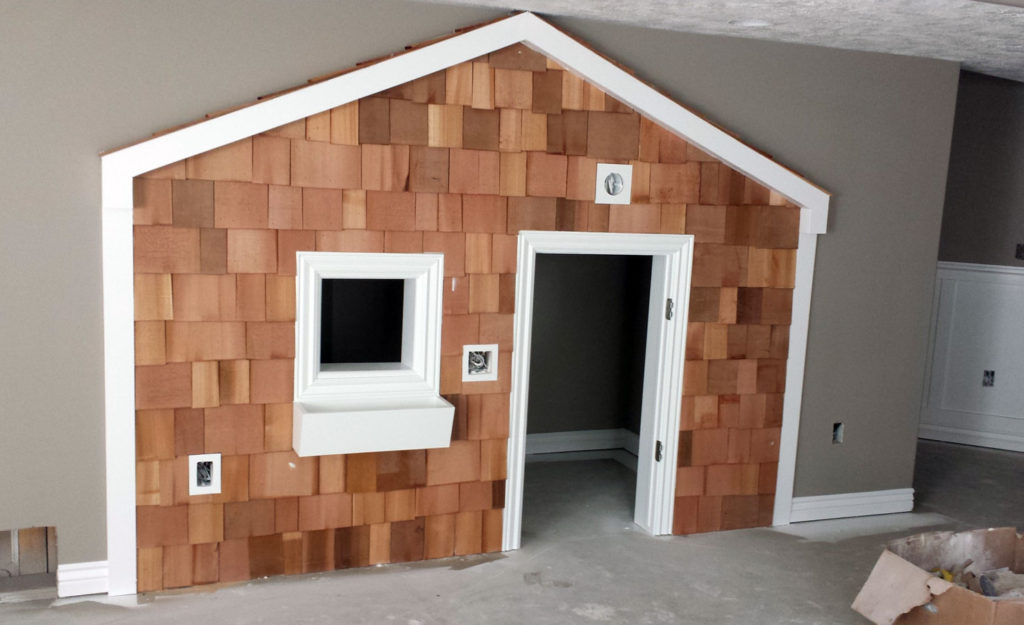
2. The Indoor Adventure Park
Why go to the playground when you can bring it home? Add a rock-climbing wall, rope ladder, or slide for nonstop fun. Combine with padded mats and a small “reading fort” corner for downtime.
- Install climbing grips or cargo nets: Great for active kids.
- Use wall-to-wall mats: Cushion falls safely.
- Include vertical space: Monkey bars or ceiling swings add excitement.
Pro Tip: Use sound-absorbing panels on the ceiling — energy is great, echoes aren’t.
3. The Imagination Studio
Dedicate a section to art, music, and creativity. With washable surfaces and organized supplies, you can unleash the messiest crafts without stressing.
- Chalkboard or whiteboard wall: Encourage doodles and learning.
- Adjustable work table: Fits toddlers and older kids alike.
- Storage bins + pegboards: Keeps crayons, brushes, and glue sticks tidy.
Pro Tip: Add LED track lighting or daylight bulbs — proper lighting makes a huge difference for creative projects.
4. The Home Theater + Playroom Combo
If your basement is big enough, merge entertainment and play. During the day, it’s a play zone; at night, the space converts into a mini-cinema.
- Soft modular furniture: Easy to rearrange for different activities.
- Projector + retractable screen: Saves wall space for playtime.
- Hidden toy storage: Ottomans and built-ins make cleanup easy.
Pro Tip: Use blackout curtains on one side of the basement to control light during movie nights.
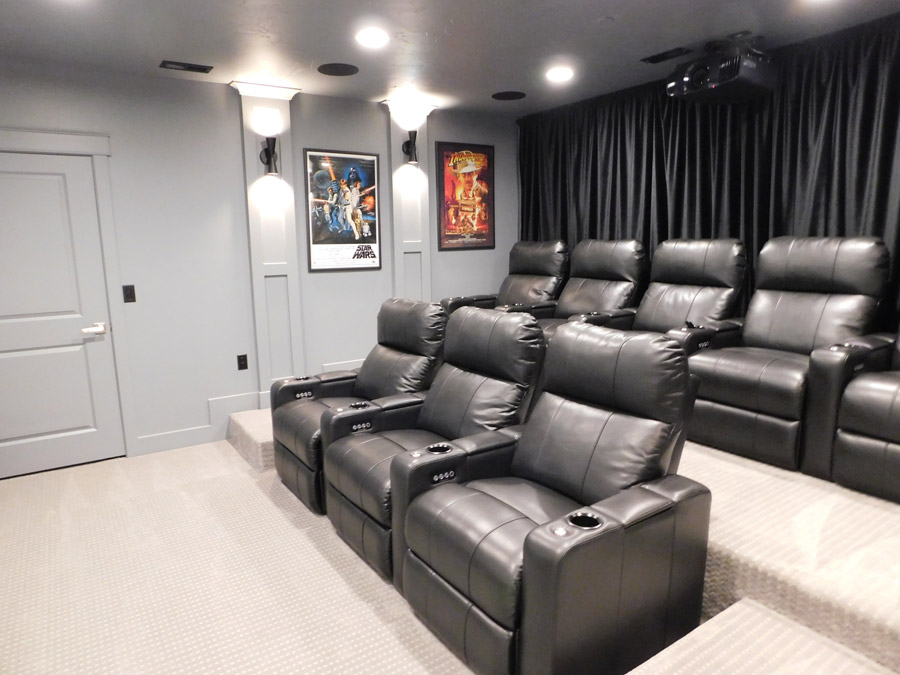
5. The Homework & Hangout Hub
Older kids need a chill zone for studying or gaming — but still within view. Create a hybrid design that includes a homework desk, bookshelf wall, and gaming setup.
- Dual desk stations: Perfect for siblings.
- Smart LED lighting: Switch from bright study mode to chill mode.
- Floating shelves: Displays awards, books, and décor neatly.
Pro Tip: Tie this zone into a home office or craft corner for family flexibility.
6. The Mini Sports Court
Transform your basement into an indoor sports area — ideal for Utah winters or rainy days. Install a low-impact floor and safety padding, then let the games begin.
- Basketball hoop or soccer net: Adjustable options fit any ceiling height.
- Rubber or vinyl gym flooring: Durable and shock-absorbent.
- Storage rack for balls and gear: Keeps the area clean and accessible.
Pro Tip: Add mirrors to visually double the space and help athletes check their form.
7. The LEGO & Builder’s Basement
For kids who love to build, dedicate a section to LEGO or STEM play. A simple workbench, built-in cubbies, and open shelving turn chaos into creative order.
- Counter-height table: Keeps projects intact between sessions.
- Clear bins + labels: Make cleanup easier for kids (and adults).
- LED strip lighting: Adds flair and improves visibility for detail work.
Pro Tip: Integrate this with a basement lighting plan to avoid harsh shadows on projects.
8. The Cozy Reading Nook
Balance play with calm. A soft, well-lit corner encourages quiet time and reading. Add built-in shelving, bean bags, and plush rugs.
- Warm LED sconces: Gentle lighting for reading.
- Custom bookshelves: Utilize wall space efficiently.
- Thick area rug: Creates a defined comfort zone.
Pro Tip: If space allows, add a window well or egress for natural light — it makes the nook feel like a secret retreat.
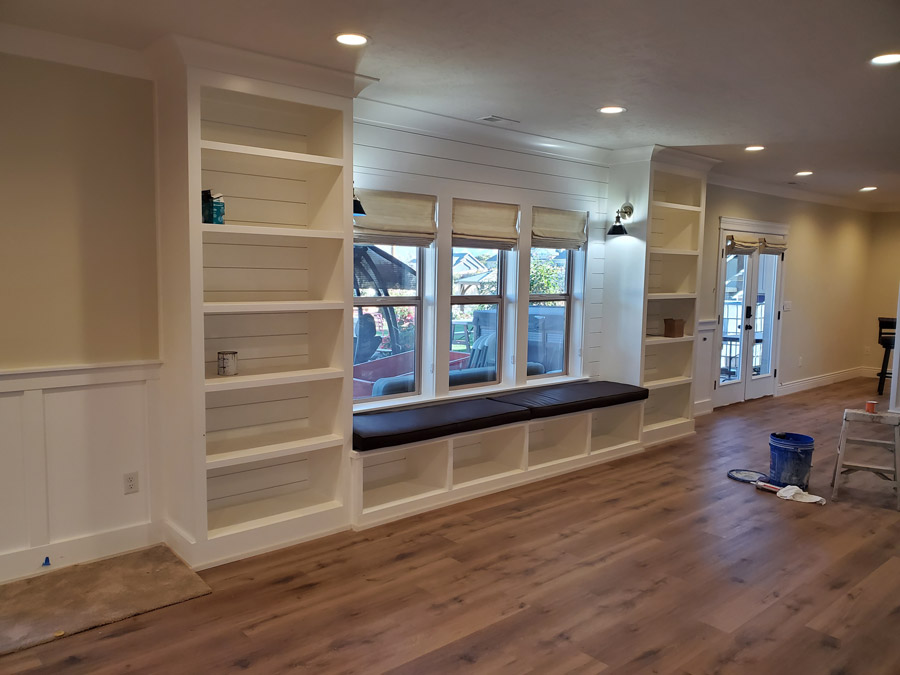
9. The Teen Lounge
Give older kids a place to host friends safely at home. Think mini-living room meets media center.
- Sectional sofa or bean-bag pit: Casual and flexible.
- Mounted TV + gaming console setup: Keeps cords off the floor.
- Small fridge + snack bar: Because teens are always hungry.
Pro Tip: Add dimmable lighting and a small Bluetooth sound system for movie or game nights.
10. The Parent Escape Zone
Yes, you deserve your own corner too. Add a mini-bar, reading nook, or fitness station within the playroom so you can relax or multitask while the kids play.
- Compact gym setup: Yoga mat, dumbbells, and small TV.
- Coffee or drink bar: Keeps you close but relaxed.
- Comfortable chair with side table: A perch for supervision and downtime.
Pro Tip: Blend adult and kid zones visually — same flooring, coordinated colors, and shared lighting make the space cohesive.
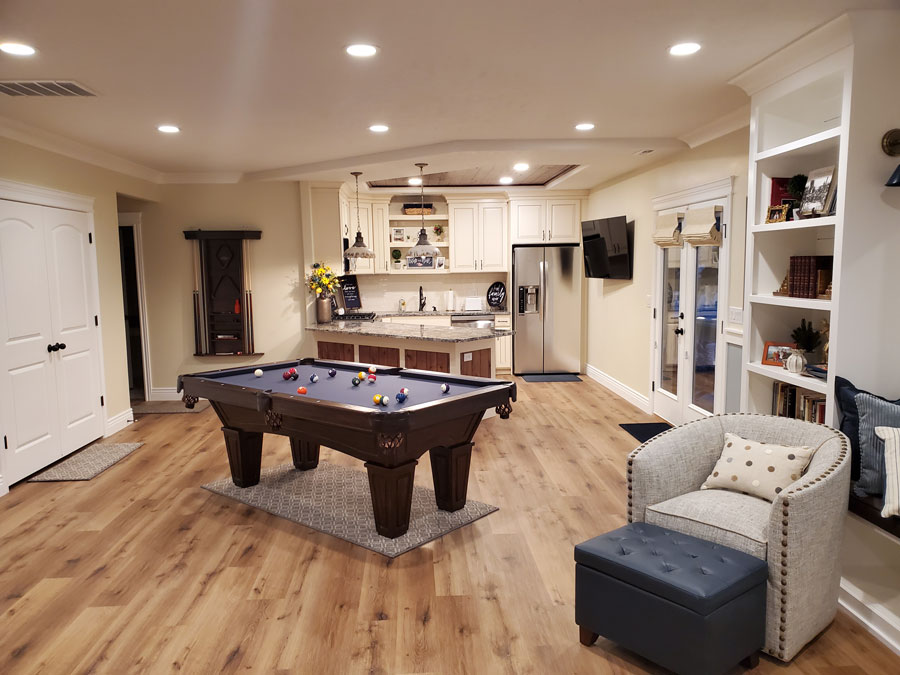
Basement Playroom Remodel Costs
A typical basement playroom remodel costs $15,000–$40,000 depending on features, finishes, and square footage. Larger family fun spaces with game zones, media areas, or gyms can reach $60,000+.
| Feature | Average Cost (USD) | Details |
|---|---|---|
| Framing & Insulation | $2,000–$5,000 | Comfort and energy efficiency. |
| Flooring | $1,500–$4,000 | Foam, vinyl, or carpet tiles. |
| Lighting & Electrical | $1,000–$3,000 | Ambient, task, and accent layers. |
| Built-ins & Storage | $1,000–$5,000 | Benches, shelving, and cubbies. |
| Play Equipment | $2,000–$10,000 | Slides, climbing walls, or gym gear. |
| Total Range | $15,000–$40,000+ | Based on size and scope. |
Design Tips Before You Build
- Plan for growth: Make it adaptable as kids get older.
- Use durable finishes: Scuff-resistant paint and vinyl flooring are your friends.
- Safety first: Round furniture edges and anti-slip mats.
- Layer lighting: Overhead, task, and accent zones prevent dark corners.
- Control clutter: Built-ins and baskets make cleanup fast.
Build a Basement Playroom That Grows With Your Family
A basement playroom isn’t just about toys — it’s about creating a safe, joyful space where memories are made. Whether you’re designing a creative zone for toddlers or a teen-friendly lounge, the right remodel will keep your home organized, fun, and family-focused.
Pro Worx Construction designs custom basements across Utah — from playrooms and gyms to home theaters and guest suites. Our experts can help you build a space that fits your family perfectly.
Get a Free Quote from Pro Worx Construction
Because the best family adventures start right at home — and sometimes, just downstairs.
Frequently Asked Questions
How much does it cost to build a basement playroom?
Most homeowners spend between $15,000 and $40,000, depending on features and finishes.
What flooring is best for a basement playroom?
Vinyl plank, carpet tiles, or foam mats are soft, durable, and moisture-resistant.
Can I include a climbing wall or slide?
Yes — just ensure proper padding, ceiling height, and safety installation.
How do I brighten a basement playroom?
Use light-colored walls, LED lighting, mirrors, and, if possible, egress windows or light wells.
Is a basement playroom a good investment?
Absolutely. It adds functional square footage and strong resale value for family buyers.
Additional Resources:
Top 10 Basement Renovation Ideas
Cost to Finish a Basement in Utah


